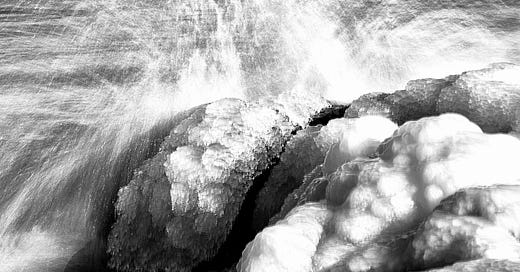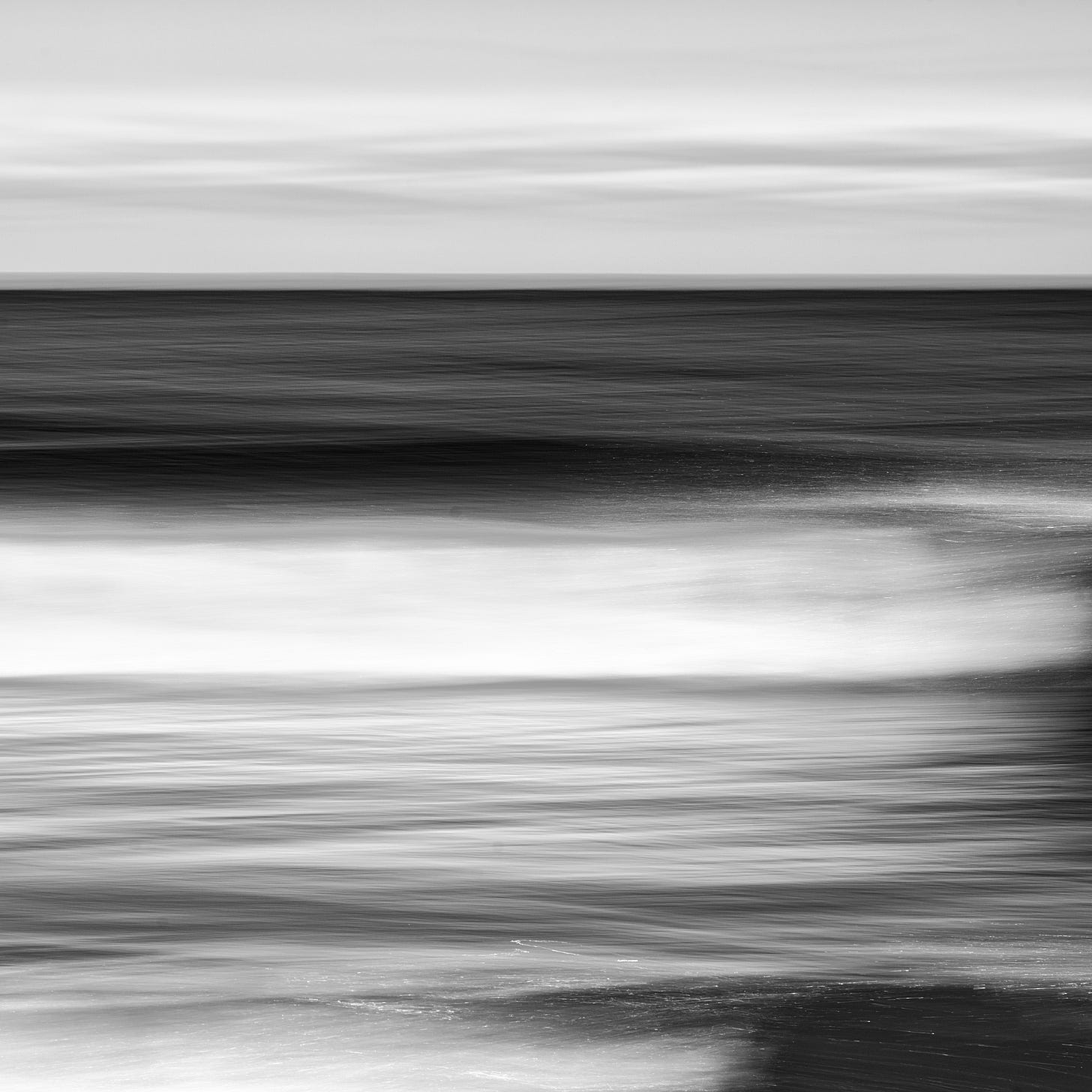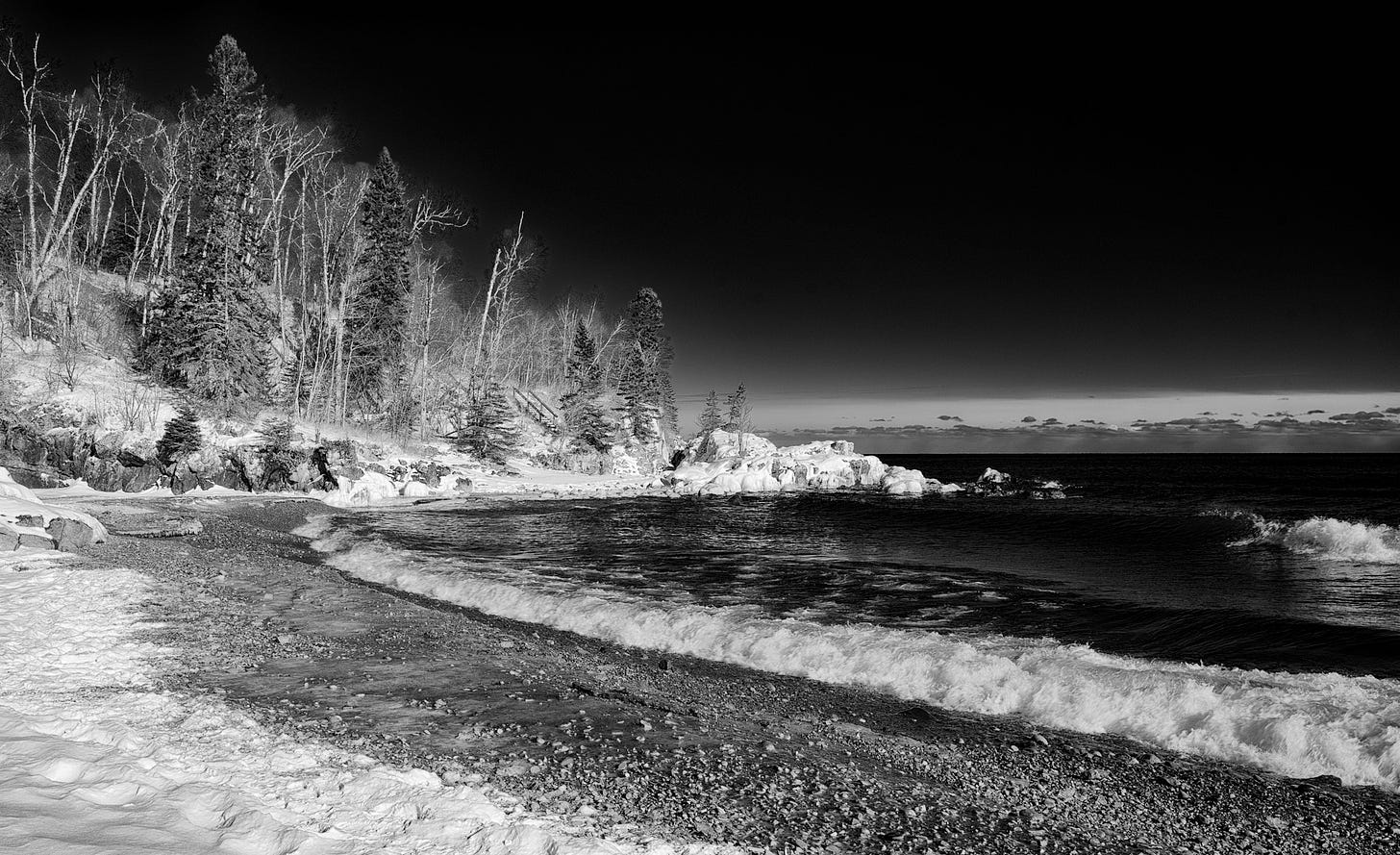One of the many joys of studying photography at university is being pushed to go outside your comfort zone. This past week, I was required to shoot the same scene in three styles so that it would appear that three different photographers made the images. I used this as a chance to experiment; I stayed comfortable for my first image, tried ICM for my second, and used a red filter to challenge our perception of tones for my third.
I used my longest lens to get close to this scene and then stacked ND filters to bring the shutter speed down: 330mm 0.4 seconds at f/13, ISO 64. This allowed me to capture the spray's extruded time motion and create this intense visual explosion. Below the spray, beautifully sculpted ice formations have been made, rich with texture and reflecting the harsh sunlight. This image was created with an experiential outcome in mind. People who don't live in the north rarely witness these beautiful boundary conditions in the harshest environments.
I switched to my standard zoom lens (24-120mm) for this second image and set it to 89mm. Using my tripod for horizontal stability, I added a six-stop ND filter and practised creating horizontal intentional camera movements (ICM). I found the most pleasing effect was with the shutter speed set to one-sixth of a second, as it allowed the wave definition to be visually maintained. I made this image to show how water and ice are unified at a visual and molecular level, blurring the boundaries between liquid and solid matter as the waves create and erode the ice.
In this final image, I was experimenting with using a red filter to help bring interest to what was a dull sky. Using the filter, I emphasised repeating tonal variations and interesting diagonal lines by inverting the usual dark land/water to light sky contrast. I timed the image to capture the wave breaking and curving along the shore, complementing the curved snowline on the beach. The light, dark, repeated curves bring the eye up through the image to the tip of the land, where they can explore the beautiful ice formed over the rocky promontory. The variations are not just in the tone but also the texture, first the snow, then the pebbles on the beach, then the breaking wave and then the ice floating in the water.
To capture the expanse of this view, I used my standard zoom at 24mm, f/11 1/60th of a second and base ISO.
What do you think? Did I succeed with the assignment? Let me know in the comments.







I’d give you an A+ just based on the first photo. It would be nice to see the second photo in color. Well done, Christopher. 📸 🎞️
Awesome job! Really interesting project. Great photos.